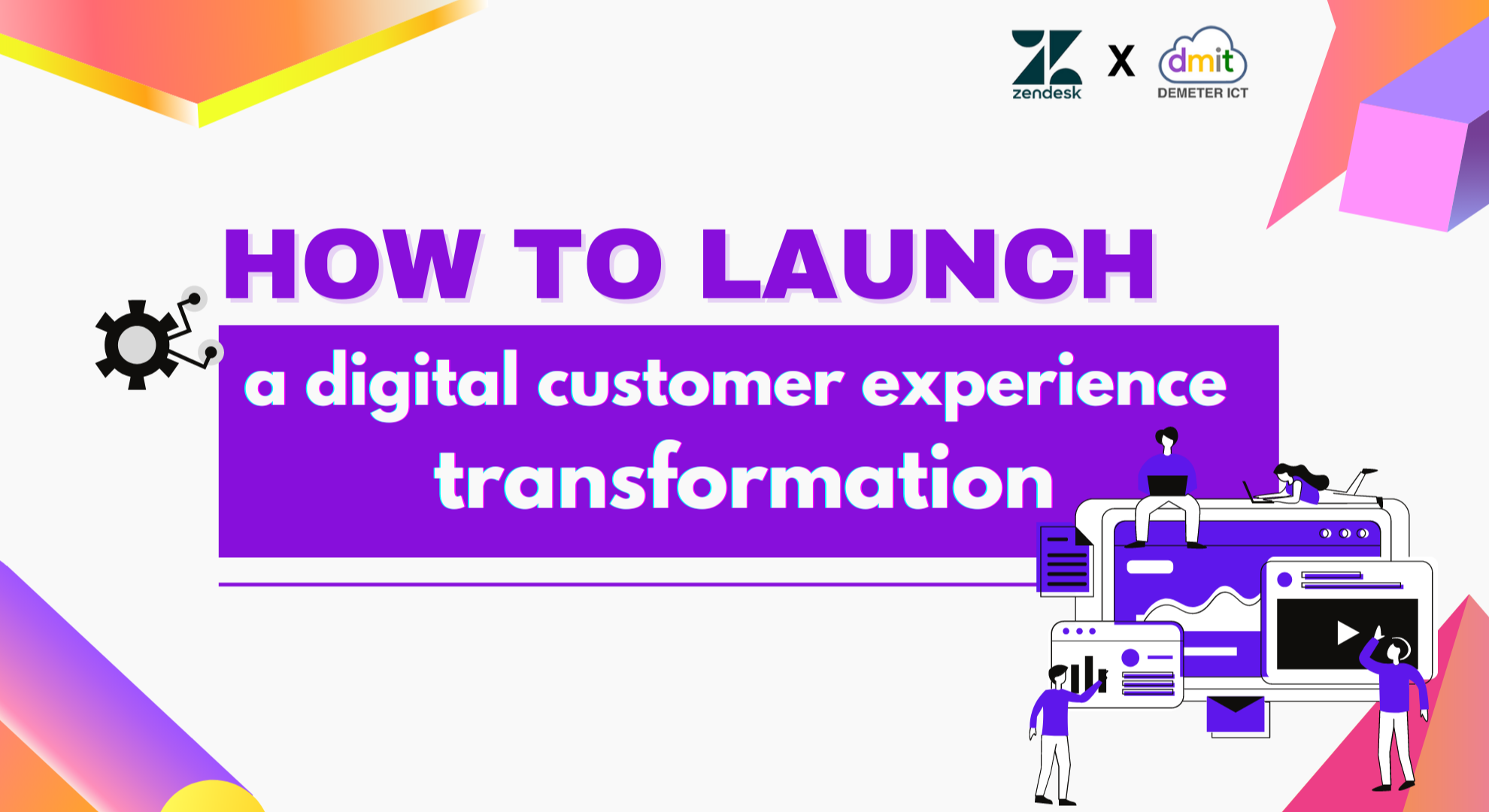What is a customer experience transformation?
First, let’s start with what the customer experience is: it’s everything related to a business that affects a customer’s perception and feelings about it. As previously mentioned, that includes customer service, but it also touches on the purchasing experience, marketing efforts, advertisements, and so on.
When that experience is working well, your customers will be pleased and your business will thrive. But every business at some point will need to undergo a customer experience transformation. While transforming that experience isn’t for the faint of heart because it’s complicated and challenging, and it touches on every aspect of the business, it’s increasingly essential.
And here’s the rub: a customer experience transformation isn’t a one-and-done effort. To adapt to changing expectations and market conditions, businesses must constantly tweak and improve the customer experience. But to start, there are three elements that must be in place for a successful customer experience transformation, as identified by McKinsey partner Nicolas Maechler :
- Customer-centric buy-in from the top to ensure a shared vision
- The redesign and digitization of customer journeys
- A permanent, live customer feedback loop that is received by as man
According to McKinsey’s research. A customer experience transformation that successfully incorporates all of those elements can increase customer satisfaction by 20-30%, provide economic gains ranging from 20-50% of the costs associated with transforming the customer journey, and increase employee satisfaction by 10-20%. Those are powerful numbers. So let’s take a closer look at those three elements.
1. Customer experience transformation company-wide

For a customer experience transformation to work, buy-in from the top is essential. Because digital transformation is expensive, which means that decision-makers who control company resources must be committed to the process. Without them, the customer experience transformation your company needs will fizzle before it even gets started.
That said, it takes more than just executive leadership getting behind the effort; team leaders and rank-and-file employees must also commit to the process. The word transformation is synonymous with change. So whether you’re working in a call center or directing marketing efforts, getting comfortable with doing things differently comes with the territory. Remember that, customer expectations are always evolving. So “this is how we’ve always done it” won’t pass muster.
There will be ongoing evolution, training on new tools and processes, and refinement. The company culture must embrace continuous learning and risk. If that’s not baked into the way the company does business. Then, customer service transformation will stutter and grind to a halt.
2. Redesign customer experiences with best practices

The next phase, redesigning customer experiences, has to be a collaboration between what customers are asking for and what employees know about the customer journey. However, But there are some tried-and-true elements for making a customer experience transformation work:
- Marketing must set realistic expectations of your product or service.
- The product should be designed to be intuitive and logical.
- Customers love to solve their problems on their own, so offer robust self-service options.
- Don’t wait for customers to contact you about a problem—reach out proactively.
- Be honest and clear in your product pricing.
- Focus on providing quick, reliable customer service.
Beyond those core areas, you’ll want to examine every point where customers interact with your brand. Do customers often leave items in shopping carts? Is the return process simple and fast? Does your website load quickly and feature an intuitive design for easy navigation? Your employees and customers both need to weigh in on their best experiences and their expectations for customer experience with your organization.
The next step is to create digital tools that will support all your best customer experience initiatives. That means robust customer service management tools, intuitive apps, digital payment integrations, and anything else you need to support this customer experience transformation. And that will mean employees who used to follow one process or protocol for delivering a customer experience now need to reskill to provide the new, digital experience.
3. Create a customer insights and action engine

A feedback loop is only if you’re actually using it to make changes. Instead of just a feedback loop. The company needs to have a customer insight and action engine, a process that will ensure customer feedback is incorporated into operations and action plans.
You can start by identifying all the touchpoints in your ideal customer journey and creating metrics to measure how well your company is doing. You can use both automated data, such as completed and abandoned sales processes, and customer feedback data, such as asking customers what were their best and worst moments in the customer experience.
Meanwhile, you can also use natural language processing tools with all your customer interfaces to identify how customers are responding to their experience and tweak and improve your efforts ongoing, which should improve both your employees’ and customers’ experiences. If you want measurable results in terms of customer retention and revenue gains, you have to measure what’s working, and what’s not.
Data Source : Zendesk Blog
Learn more about Customer Experience Transformation.
Demeter ICT – No. 1 Zendesk Premier Partner in Asia Pacific and Great China Region.
For more information, Zendesk product and services, please contact us.
- support@demeterict.com






